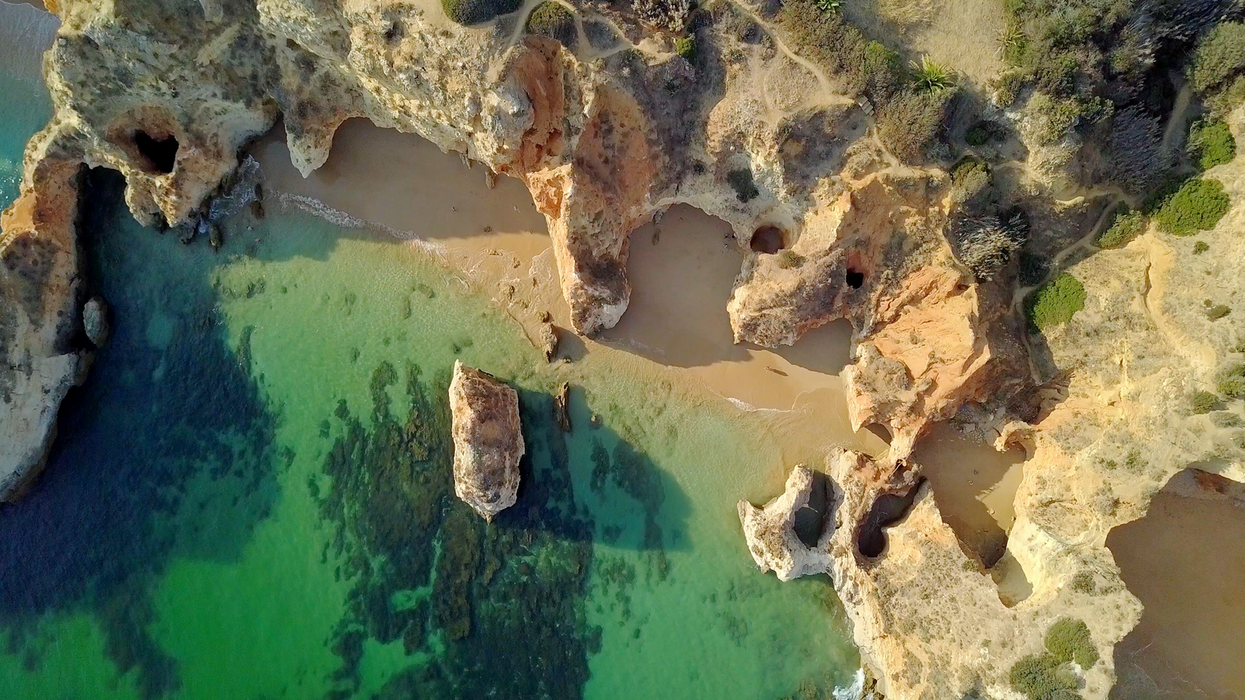Aerial and Overhead Shots: Shining God's Eye on the Story
Aerial Shots and overhead shots are a great way to let the audience on the scope or action or the aftermath of a scene. But how are they defined?

Most of the worlds we travel into, whether it's Westeros or Wisconsin, are shown to us through a character's point of view. But sometimes directors and cinematographers decide to pull us out of those points of view and turn the camera to a more omniscient, godly, point of view. These are called overhead, aerial, bird's eye, or god's eye shots. And they're all over movies and television.
There's also an important shot type that every good filmmaker or DP should have in their shot type and angle repertoire.
Today we'll go over the definition, examples, and uses of those kinds of camera shots and help you learn how to beef up your shot list by utilizing this angle.
Let’s dive in.
The Aerial Shot Definition
So, what is an aerial shot? An aerial shot is taken from an elevated vantage point. It frames the subject or space from on high.
What Else Do We Call Aerial Shots?
As we mentioned in the opener, aerial shots are also called God’s eye view shot, bird's eye view shot, aerial view, raised shot, and the elevated shot. Nowadays, many of these shots are captured by drone. But not all aerial shots are the same. Some shots which are closer to the characters are called overhead shots. A great example of this kind of shot are these travel shots used by drones and helicams to capture aerial cinematography.
Overhead Shot Definitions
What is an overhead shot? The overhead shot is a high angle shot almost directly (or literally directly) above the subject. It allows the viewer in on the action but still maintains character detail.
What Else Do We Call Overhead Shots?
We also call it the god’s eye shot. Because you use them for judgement. A great example would be the overhead shot at the end of Taxi Driver. Go to the final minute of the video to see the god's eye shot.
Let's learn more about these camera shots!
I know I said we had different names for the aerial shot, but each name can also call attention to something specific, so let's go over a few examples of each to help us better define how we'd want to use the shot in our own work. Aerial shots help directors and cinematographers define the world. And they can help you sell a movie based on its poster. Like Signs.

Once in a while, an aerial shot can be used as an establishing shot. Think about the helicopter shots in a movie like Black Hawk Down. They help show us the landscapes we're going over and establish the location of things.
The Birds (7/11) Movie CLIP - Gas Station Explosion (1963) HD
Look, if you're going to talk about a bird's eye view, Hitchcock's The Birds serves up one of the best literal bird's eye view shots of all time.
God's Eye View: Seeing From Above in The Crime Genre
While there are many uses for these overhead shots crime films love employing them in particular. That's because it's not so subtle to include God's judgment in the committal of crimes. But still. I love seeing them.
The Untouchables (1/10) Movie CLIP - A Kind Word and a Gun (1987) HD
This shot in The Untouchables shows us all the people who surround Al Capone and how important he must be to the narrative.
What's next? Learn about close-up shots!
We’ve talked in our wide shot and medium shot posts about the importance of capturing emotion in a film. After all, we go to the movies not just to be entertained, but to feel something. That feeling can be happiness, joy, anger, sadness, laughter, etc. No shot has more of a direct impact on how the audience interprets a scene that than the close-up shot (also known as the close shot). How and when you use a close-up shot can have an enormous effect on the emotional weight of a scene.
So click the link to learn more!











